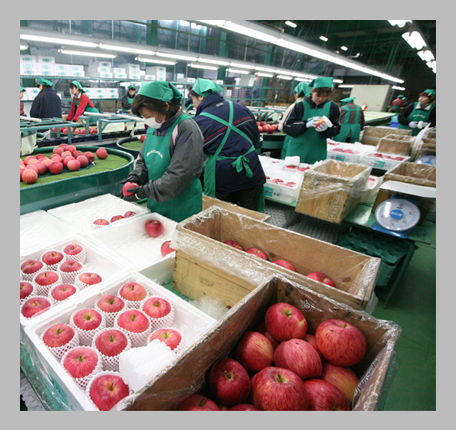The Secret of High-quality Aomori Apples
Aomori apples are called the "World's best Apples."
Compared to others in respect to their color, shape and taste, it is easy to see a difference in quality, and you may even grow to appreciate them much like one appreciates fine art.
Here we introduce you the secret of Aomori Apples; sweet, juicy and beautiful apples unlike any other fruit in the world.
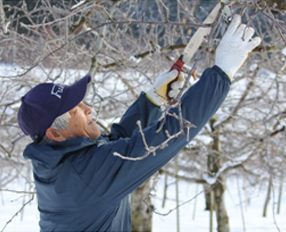
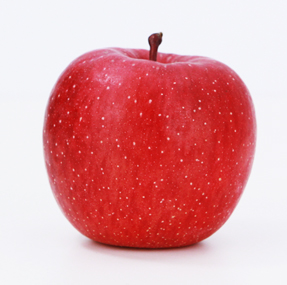
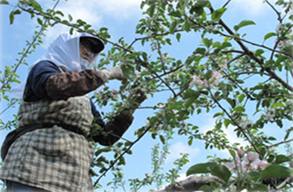
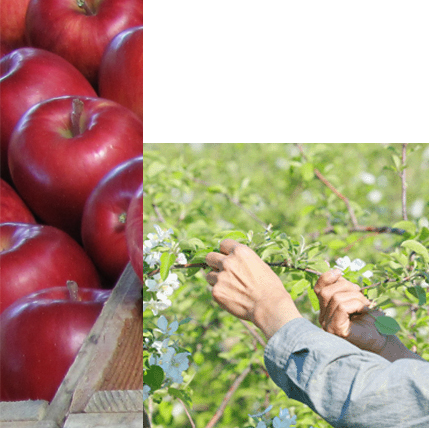
People who grow Aomori Apples
The Tsugaru region, the center of Aomori Apple production, seemed unsuitable for agricultural production due to harsh winters in this northernmost prefecture on the island of Honshu.
Although there has been major progress in agricultural science due to advanced selective breeding techniques, in the past farming efforts were hampered by cold weather damage especially in the rice crop.
At one time the situation seemed critical.
Under these circumstances, apple cultivation--which favors a cool climate--spread rapidly after the Meiji Era, resulting in a booming apple industry that accounts for 56% of Japanese apple produce.
Tsugaru people attribute the success of the apple industry to their own spirit and peculiarity.
They are said to be serious, competitive and stubborn, and even have a word to describe all these things in Tusgaru dialect, “Joppari.” This spirit is the driving force of growing better apples.
They succeeded in making beautiful apples an art form by working thoughtfully and carefully.
The climate and conditions to cultivate
We have a severe winter covered by snow for three months in the Tsugaru region.
The northwest seasonal wind from the Sea of Japan is blocked by Mt.
Iwaki and the volcanic ash soil made by ancient eruptions of the mountain enables the apples to grow rich in mineral. Water from the Iwaki which originates in the Shirakami Mountain range, a world heritage site, and timely rainfalls make for extremely juicy fruit.
Under this severe climate, we have four very distinctive seasons and also big differences between day and night time temperatures.
And these conditions are suitable for apple cultivation, as even the coldness is credited to giving the apples their vivid color.
Cultivation with care
The quality of Aomori Apples is assured by the cultivation technique used by the growers.
Among the growers in Tsugaru, it’s said that one apple goes through 10 stages before harvest.
The farmers grow each apple on each tree with great care to produce high quality fruit.

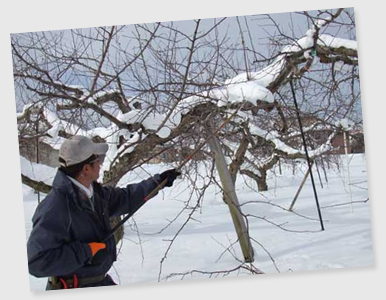
❶Pruning branches(January to Marck)
There is a big difference in our pruning techniques from those around the world. Pruning is the most important step in the cultivation process.
Some say it decides 70% of the quality.
Each apple tree has a unique character like a person and the farmers have the sense to see it, envisioning the shape each individual tree will take.
They trim unnecessary branches one by one so the sunlight reaches inside the tree.
It is said that one must prune 1000 trees before he can become a full-fledged farmer.
This practice of selective pruning is very different from other techniques used in other countries.
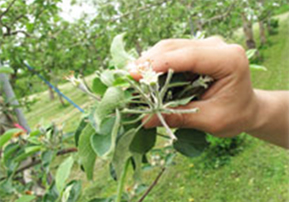
❷Defloration and pollination(May)
Defloration is the flower-thinning to save the most important flowers in the earliest stages of budding and blossoming.
It is done as soon as possible to minimize the consumption of important nutrients in the tree and thus improve quality.
Pollination is done by hand to fruit surely.
At present it is mostly performed by bees, but pollination by hand is still practiced.
You cannot assure the stable harvest without it.
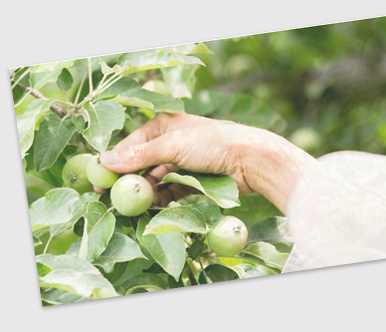
❸Fruit thinning(June to July)
Groups of five to six flowers produce tiny apples all at once.
Since those apples share nutrition from the tree, they won’t grow big enough if left alone.
Again the farmers pick the less important ones, leaving the biggest one in the middle.
Moreover, the apple with a thick long stem and nice shape grown among three to five others will be further selected to grow to maturity.
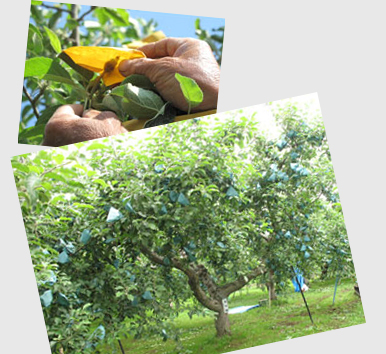
❹Bagging(June to July)
Growers bag apples one by one after fruit thinning to protect them from diseases and pests, and to promote coloring and longer storage life as well.
It is called “bagged cultivation.”
The varieties bagged in this way include Fuji, Jonagold,Mutsu and Kinsei.
❺Removing bags(Auqust to October)
By removing bags, apples are exposed to a lot of sunlight. Their color brightens immediately.
The timing of this step is very important since the temperature and the amount of sunlight can ruin the fruit. It requires a sensitive and experienced mind.
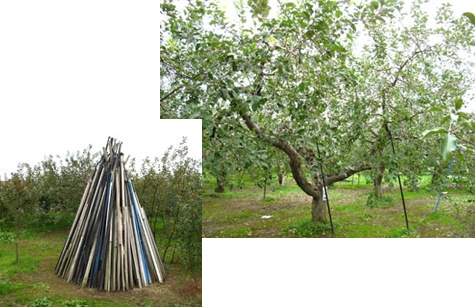
❻Supporting pole(Auqust to October)
This is done to prevent the tree from falling when the fruit grows.
The city of Hirosaki is the largest producer of apples in Aomori prefecture.
It is located at 40°36’ North Latitude.
Because of this geographical location there is a sharp difference between the sunlight angles in summer and fall.
The growers move branches supported by poles precisely so that the fruit receives enough sunlight considering the angle change.
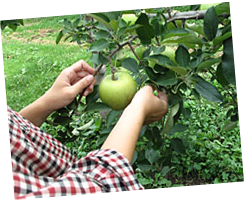
❼Removing leaves(Auqust to November)
This is done to color the apples evenly by thinning leaves surrounding apples so that they get maximum sunlight.
It affects brightness and sugar content.
Too much thinning will lead a mal-nutrition of apples because of less photosynthesis.
Generally one apple will require the nutrition of 50 to 60 leaves.
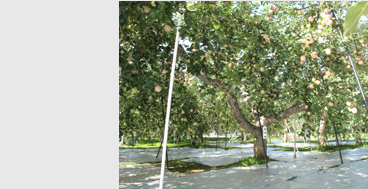
❽Reflective sheet(Auqust to October)
This is done by laying the sheet on the ground to reflect sunlight onto the lower surface of apples.
The sheet also serves to lower the temperature of the ground and tells the trees that the harvest time is approaching, promoting coloration of the fruit.
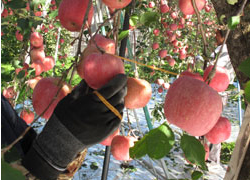
❾Rotating apples(September to November)
It is the last step of apple growing.
The apples are gently rotated to receive sunlight on the whole surface avoiding the shade of leaves and branches.
This step will complete the carefully treated apples to keep them in peak condition.
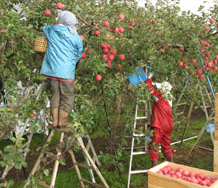
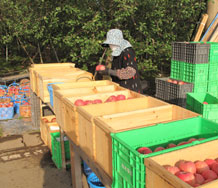
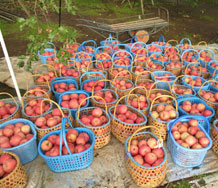
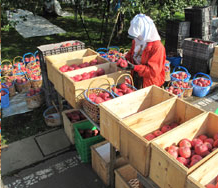
❿Harvest(September to November)
We can save time and labor obviously if all apples on a tree are harvested at once.
However the varieties such as Tsugaru and Kiou tend to vary in color and ripeness from tree to tree and even branch to branch.
In those cases, only the fruit at their peak flavor and color are picked, and one tree may be picked several times.
Farmers are dedicated to deliver the best apples to their customers.
The most popular variety, Fuji, is harvested in November, when farmers risks freezing finger tips to protect the apple’s flavor.
This chilly harvest helps the honey core in the flesh when fully ripened.
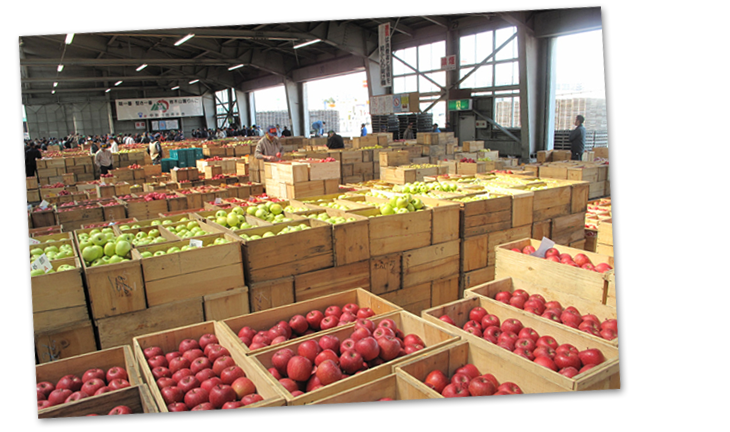
CA Storage by traders and the introduction of photo sensor sorting machine together with various distribution channels
In 1961, the development of CA storage made great leaps in long term refrigeration techniques of apples.
Apple traders introduced this system very quickly, as it allowed them to store apples harvested in fall until next August and distribute them all over Japan at stable prices.
CA storage meant apple growers could produce large quantities of apples confidently.
Today, with the help of a photo sensor, farmers are able to sort not only by the appearance of apples but also the sugar content and the condition of the fruit flesh.
And it plays a dependable role in the distribution of high-quality apples.
The expansion of technology in recent years has led to exporting to other countries like Taiwan and continues to spread widely throughout the world.
CA(Controlled Atmosphere) storage is a system that controls the respiration level to minimum and keeps their freshness, by adjusting the concentration of oxygen, nitrogen, and carbon dioxide in the storage.
As CA storage leads apples into the sleeping phase, they can be preserved for 6 to 9 months.
And apples are sold to consumers in good condition freshness all year round.
